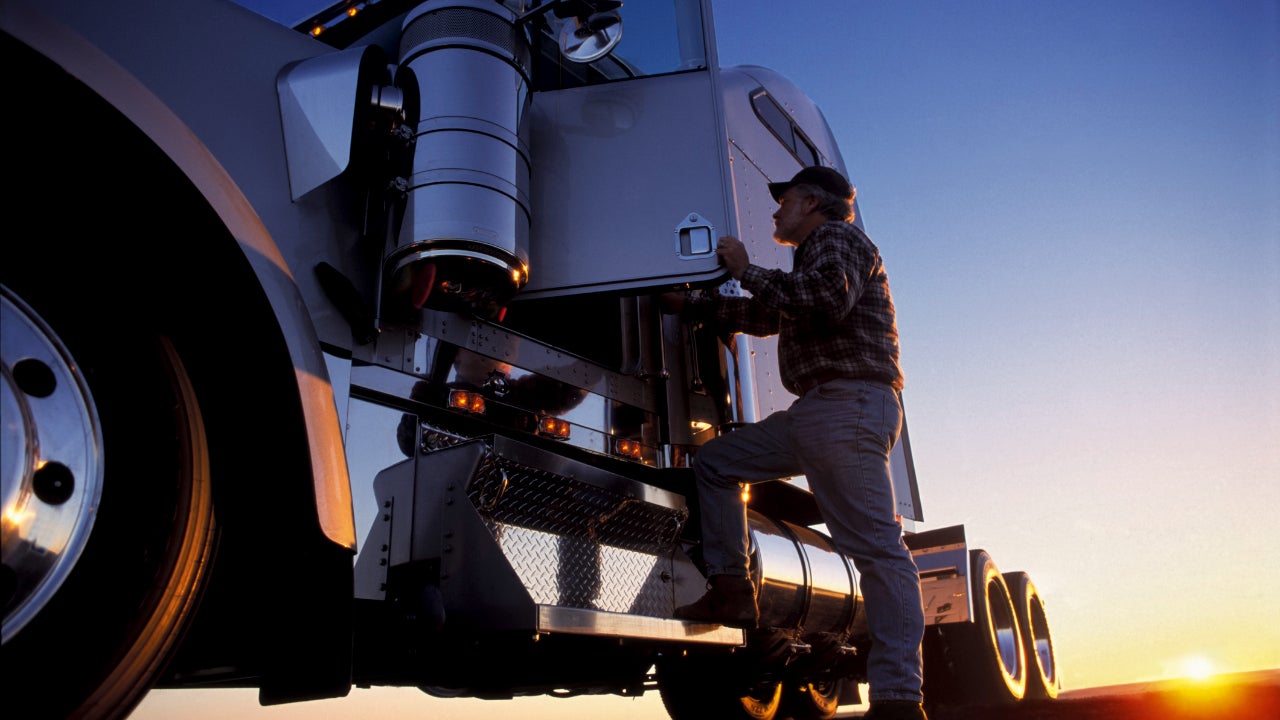Types of equipment financing

Key takeaways
- There are several options for financing equipment purchases, including term loans, SBA loans, equipment loans and leases.
- Each type of equipment financing loan has advantages and disadvantages, so it's important to carefully consider business needs before choosing one.
- Online and alternative lenders may be a good option for startups or business owners with bad credit who need fast funding for equipment.
Equipment loans help business owners finance the purchase or lease of essential business equipment. From general term loans and lines of credit to equipment loans and loans backed by the SBA, your business has plenty of equipment financing options. Each comes with its own advantages and disadvantages, such as longer loan terms, low interest rates or the ability to use the newest equipment without ownership.
To choose the right loan for your business, make sure you know how the different types of equipment financing work and which lenders offer them.
Types of equipment financing
While businesses often use equipment loans to finance equipment, you can buy equipment with many types of business loans. Your equipment financing options include:
Term loans
Term loans allow your business to borrow a lump sum and repay it over five to 10 years on average. This flexible type of loan can suit various needs, including working capital or large one-time expenses.
Term loans can be unsecured or secured, though most equipment loans are secured. A secured loan is backed by business assets, which means that the lender can seize the asset if you don’t make loan payments, making it less risky for the lender. You may be able to get lower interest rates and more favorable repayment terms with a secured loan.
SBA loans
SBA loans are government-backed loans offered through approved SBA lenders. These loans come with competitive interest rates and long repayment terms, making them ideal for business owners looking for manageable payments. They are designed for businesses that can’t qualify for traditional financing. However, SBA loans can take 30 to 90 days to fund, so you’ll have to be patient.
The Small Business Administration (SBA) offers several types of loans that can be used to purchase equipment:
- 7(a) loans. These are the most common type of SBA loan and are available from many lenders. This type of loan can be used for general working capital expenses or to purchase equipment.
- 504 loans. A 504 loan is designed to purchase large equipment. Your business can borrow up to $5.5 million, and for working capital loans, repayment lasts anywhere from five to 10 years.
- Express loans. These work the same as 7(a) loans, although the loan amount is limited to $500,000. But the SBA doesn’t need to approve these loans, making the approval time much faster.
- Microloans. For newer businesses, especially those owned by women, minorities and other underserved communities, a microloan is more accessible than the 7(a) and 504 loans. While you are limited to just $50,000 for equipment, you should be able to qualify with low credit or revenue.
Equipment loans
Equipment loans are the standard option for financing equipment since the loan is backed by the equipment being purchased. They are widely available from banks and other lenders, but you can also find financing options through the seller.
Since equipment loans are secured by the equipment, there is less risk to the lender. So, these loans often have lower interest rates than unsecured loans. They also tend to offer more accessible eligibility requirements, accepting new businesses and business owners with bad credit. That said, you could see rates of 30 percent or higher depending on factors like your creditworthiness and business revenue.
Equipment leases
As an alternative to an equipment loan, you can opt for an equipment lease. Equipment leases come with smaller monthly payments and may not require a down payment like an equipment loan might. What happens at the end of your lease depends on the type of lease you sign.
Operating leases: These allow you to use the equipment for the lease term and then return it in good condition. It gives your business access to the equipment you need and is a good option if you are in an industry that requires frequent updates to your tech.
Capital leases: These allow your business to purchase the equipment at the end of the lease period. They have lower payments like an operating lease, but you may be required to make a balloon payment, a large payment at the lease’s end, to cover any residual value once your lease is finished.
Business lines of credit
Lines of credit work like business credit cards. Your business has access to a credit limit the lender sets, and you can draw and repay as needed. This makes them a good choice for businesses that frequently need smaller equipment purchases or repairs.
With lines of credit, you only pay interest on the amount you use. As you pay back the loan, the credit limit replenishes, allowing you to borrow from the credit line again. This gives your business plenty of flexibility based on cash flow and other operating expenses.
Business lines of credit typically have larger loan amounts and lower starting interest rates than business credit cards. But they lack certain features that business credit cards have like grace periods, 0 percent introductory APR offers and the chance to earn rewards on purchases.
What can equipment financing be used for?
Equipment financing loans are most often used for buying commercial equipment, which may or may not be related to the product or service that you sell. For example, you might buy machinery for manufacturing your product or a new HVAC system for your building.
If you get an equipment loan specifically, the loan will be used to purchase new or used equipment. If you get a business loan other than an equipment loan, you may be able to use the funds for other purposes in addition to the equipment. Some equipment loans also offer you a line of credit that you can use to purchase or repair equipment.
Where to get equipment financing loans
No matter what type of equipment your business needs, it will likely be a large expense. Most businesses don’t have the cash to buy equipment outright. Thankfully, there are a wide variety of equipment financing options.
Seller financing
Depending on the type of equipment or your industry, you may be able to receive financing through the seller. A bank or alternative lender generally backs these, and they may have a simpler application process than other equipment loans.
Banks and credit unions
Banks are the go-to source for business funding, but many credit unions also offer similar options. You may be eligible for a relationship discount or other benefits if you already have a business bank account. Even if you don’t, you may be able to score a competitive rate — provided you qualify and are willing to wait through a slightly longer application process.
These bank lenders offer favorable features for equipment loans:
| Lender | Top loan features |
|---|---|
| Bank of America |
|
| TD Bank |
|
| U.S. Bank |
|
Online lenders
Online lenders and other alternative lenders are good options for startups or business owners with bad credit. They are also one of the faster options out there, often funding loans within 24 to 48 hours. Online lenders with equipment financing options:
| Lender | Top loan features |
|---|---|
| SMB Compass |
|
| SBG Funding |
|
| iBusiness Funding |
|
Where to get equipment loans for startups
It is possible to get an equipment loan as a startup business. Because equipment loans are secured by the equipment as collateral, it may be easier for startups to qualify for these loans than other loans. The collateral reduces the risk for the lender, leading to a higher chance of approval. Be aware that you may still be required to sign a personal guarantee.
Like loans for established businesses, you should begin the research process with lenders that work with startups. You have a few options, so narrow these down to find the right choice to finance your equipment.
| Lender | Top features |
|---|---|
| Taycor Financial |
|
| Triton Capital |
|
Where to get equipment loans for bad credit
Since equipment financing loans are secured by the equipment itself, there are options for business owners with bad credit. These lenders specialize in helping businesses get the funding they need, so you may have better luck working with one when you need to finance equipment.
Some bad credit lenders that you may want to consider:
| Lender | Top loan features |
|---|---|
| Creditfy |
|
| Taycor Financial |
|
| Credibly |
|
| Fundible |
|
Bottom line
There are many equipment financing options and alternatives to suit almost every business. The right choice will depend on how your business is set up and what funding amounts and features you need. Consider each option carefully and make sure to have a plan in place to successfully manage any equipment loan.
Frequently asked questions
-
It depends on how your business will use its equipment. Equipment loans tend to be less expensive overall, and you keep the equipment once you finish paying the loan. For businesses in industries where you need to update your equipment frequently, a lease may be better. They are less expensive in the short term and allow you to switch to a newer model at the end of the lease period.
-
The main disadvantage of an equipment loan is that the loan must be used for buying equipment. You can get approved for other types of loans that may allow you to use the loan for other purposes. Another disadvantage is that the equipment may depreciate during the life of the loan, while the loan will be based on the purchase cost. This means that if you sell the equipment later, its current value may or may not cover the loan’s principal amount.
-
Equipment financing gives your business access to technology, machinery and other essentials that it may not otherwise be able to afford. They can help build your business’s credit score. And since they act as the collateral for a loan, you may be able to get lower rates alongside a faster application process.
You may also like



Alternatives to a semi-truck loan

Alternatives to equipment loans


